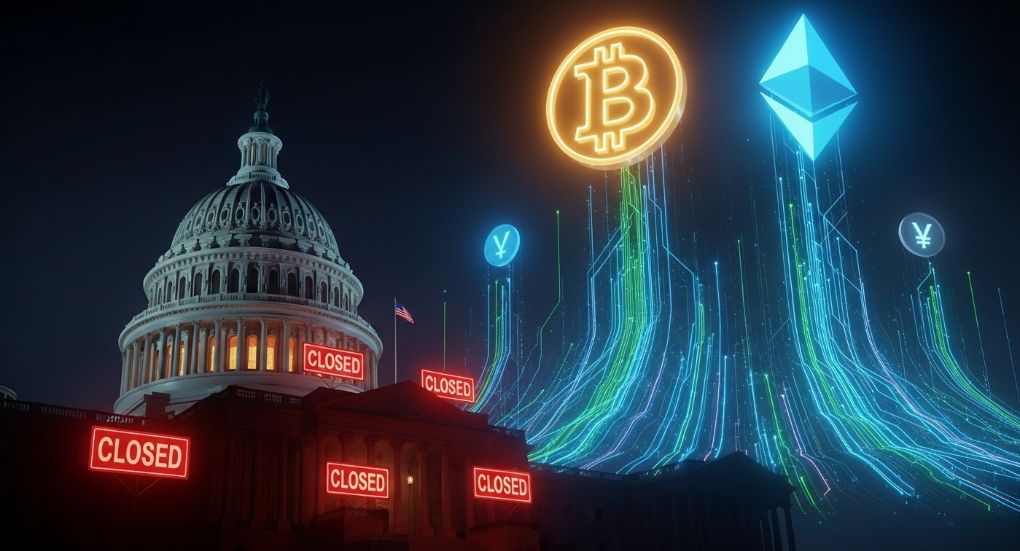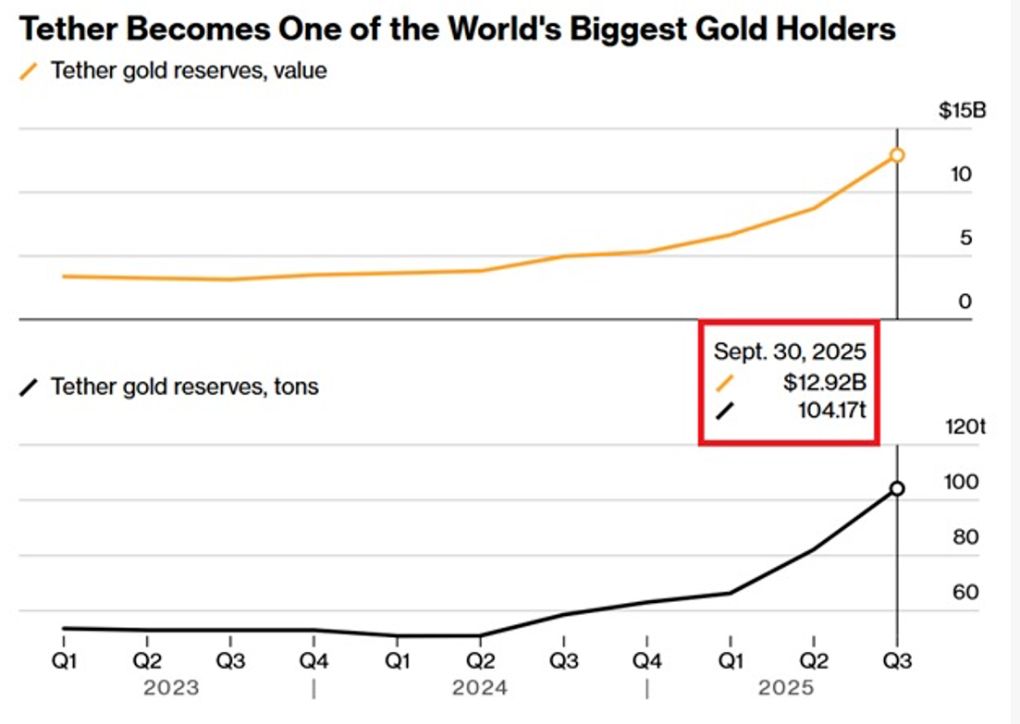Amid Washington's political deadlock, the Senate Banking Committee is quietly advancing crypto legislation, highlighting the urgency and bipartisan consensus for digital asset regulation. The U.S. government shutdown has entered its ninth day, with Congress still deadlocked over budget issues. On Wednesday, the Senate rejected for the seventh time a bill to fund the federal government, further prolonging the shutdown crisis. In the midst of this political storm, a legislative process crucial to the future of cryptocurrency has shown resilience. Despite the House being adjourned due to the shutdown, the Senate Banking Committee still plans to advance the Responsible Financial Innovation Act by the end of this month, aiming to establish a comprehensive regulatory framework for digital assets.

I. The Shutdown Deadlock
The U.S. government shutdown has entered its second week, with some federal agencies paralyzed since midnight on October 1, 2025.
● The main reason is the partisan divide between Republicans and Democrats over federal spending levels, foreign aid cuts, and health insurance subsidies, resulting in Congress failing to pass a Continuing Resolution (CR) to keep the government running.
● Although Republicans hold 53 seats in the Senate, they still need at least 8 Democratic senators to reach the 60-vote threshold to overcome filibusters.
● In the latest votes, the Democratic appropriations bill was rejected 45-55, while the Republican bill was rejected 52-42; neither bill reached the threshold for passage.
The root of the shutdown can be traced back to the budget negotiation deadlock at the end of September:
● The Republican-backed "clean" Continuing Resolution only provided short-term funding, but Democrats insisted on adding conditions such as border security and Medicaid, causing negotiations to break down.
● President Trump publicly pressured Democrats, stating that if Democrats agreed to immediately restart government operations, he would be "happy to work with Democrats," including discussing healthcare issues.
● The White House Office of Management and Budget has issued a memo confirming the government shutdown and blaming Democrats, but noted that "it is difficult to predict how long the shutdown will last."
The U.S. government shutdown disrupts the release of the September non-farm payroll report.
● The original expectation was an increase of 150,000-200,000 jobs, amplifying concerns about a slowdown in employment;
● The September CPI will be released on October 15 or slightly later, with core inflation expected at 2.5%-2.7%, but accuracy will be compromised;
● The Federal Reserve's October 28-29 meeting may keep the benchmark rate at 4.00%-4.25% or cut by 25bp, with missing data prompting Powell to adopt a wait-and-see approach.
Data Indicator | Original Release Date | Shutdown Impact | Market Expectation | Impact on the Fed |
September Non-Farm Payrolls | October 3 | Completely delayed | Increase of 150,000-200,000, unemployment rate 4.1% | Missing employment signals, possible delay in rate cuts |
September CPI | October 15 | Possible delay, accuracy compromised | Core CPI YoY 2.5%-2.7% | Inflation data deviation, increased policy uncertainty |
October FOMC Meeting | October 28-29 | Indirect impact | Maintain or cut by 25bp | Highly dependent on NFP/CPI, tendency to wait and see |
II. Nationwide Impact
● Federal employees and military personnel are in trouble. Due to the government "shutdown," about 750,000 federal employees are forced into unpaid leave, while other staff such as military and border patrol personnel who cannot leave their posts are temporarily "working without pay."
● If the federal government "shutdown" lasts for a long time, it may trigger layoffs. According to internal letters seen by Reuters, the U.S. Patent and Trademark Office under the Department of Commerce plans to lay off 1% of its 14,000 employees.
● Air travel and traffic control under pressure. Airports across the U.S. are experiencing staff shortages, with fewer air traffic controllers in some areas, affecting flight operations.
● Economic data and public services disrupted. The U.S. Bureau of Labor Statistics failed to release its monthly employment data report as scheduled, and key inflation data originally scheduled for mid-month may also be delayed.
● Hundreds of scenic sites under the National Park Service have suspended operations or limited services, impacting the tourism industry. U.S. Travel Association CEO Geoff Freeman said a one-week "shutdown" would cost the tourism industry $1 billion.
Impact Dimension | Specific Manifestation | Potential Consequence |
Legislative Process | The Senate Agriculture Committee was forced to delay the release of its bill draft due to key agency staff on leave. The Senate Banking Committee's markup vote on the Responsible Financial Innovation Act (RFIA) was also affected. | The legislative timetable is severely disrupted, potentially missing the best window to sign into law before the 2026 midterm elections. |
Institutional Functions | The Securities and Exchange Commission (SEC) has over 90% of its staff on leave, retaining only about 393 employees to handle emergencies, and has suspended review of crypto ETF registration statements. The Commodity Futures Trading Commission (CFTC) retains only 5.7% of its 543 employees on duty. | Approval of key market products is stalled, regulatory and enforcement capacity is greatly weakened, increasing market uncertainty. |
Market and Investors | Approval of new crypto ETFs is indefinitely postponed. Uncertainty in the regulatory outlook may affect investor confidence. | - |
III. Economic Losses
● Goldman Sachs estimates that for every week the government "shuts down," economic growth will decline by about 0.15 percentage points. If the impact on private institutions is included, growth could drop by 0.2 percentage points.
● UK-based Ernst & Young predicts that each week of government "shutdown" could cost the U.S. economy about $700 million.
● The U.S. Congressional Budget Office estimates that the 35-day government shutdown from late 2018 to early 2019 caused a permanent loss of $3 billion in GDP.
● Gregory Daco, chief economist at EY-Parthenon, is deeply concerned: "At such a critical time, less data makes understanding the economy more difficult," likening it to "flying blind in thick fog," which is very dangerous. National parks closed during the "shutdown," losing $1 million in ticket revenue per day, while surrounding businesses lose $77 million daily.
IV. Cryptocurrency Legislation
● The Senate Banking Committee continues to advance the Responsible Financial Innovation Act. Committee leadership hopes to mark up the Responsible Financial Innovation Act by the end of this month, regardless of whether the budget passes, and to coordinate with the House process.
● On the key issue of token securities regulation, the Senate draft differs from the House-passed CLARITY Act. Paradigm believes the Senate's "ancillary asset" proposal is more favorable to the crypto industry. The longer the government shutdown lasts, the harder it will be for the U.S. economy to recover its losses.
● The Senate Banking Committee's insistence on advancing the Responsible Financial Innovation Act shows that digital asset regulation has become an important area of bipartisan consensus, transcending short-term political disputes. This shutdown crisis is a reminder that America's institutional political deadlock may delay but ultimately cannot stop the advancement of key policies.
Bill Name | Core Content | Latest Legislative Status | Probability and Outlook |
GENIUS Act (Stablecoin Act) | Establishes a federal regulatory framework for stablecoins pegged to the U.S. dollar, requiring 1:1 reserves. | Signed into law by President Trump. | Has become law. |
CLARITY Act (Market Structure Act) | Clarifies the regulatory boundaries between the SEC and CFTC for digital assets. | Passed by the House in July 2025. Awaiting the Senate Banking Committee and Agriculture Committee to draft and merge their respective versions for review. | If the Senate completes its review by the end of the year, there is an 80%-90% chance of being signed into law before the 2026 midterm elections. |
Responsible Financial Innovation Act (Senate Market Structure Act) | The Senate version of the market structure bill, introducing concepts such as "ancillary assets." | The Senate Banking Committee has released a revised version and plans to mark it up by the end of this month. | Highly dependent on the duration of the government shutdown and political maneuvering; if delayed until spring 2026, the probability of passage will fall below 50%. |



